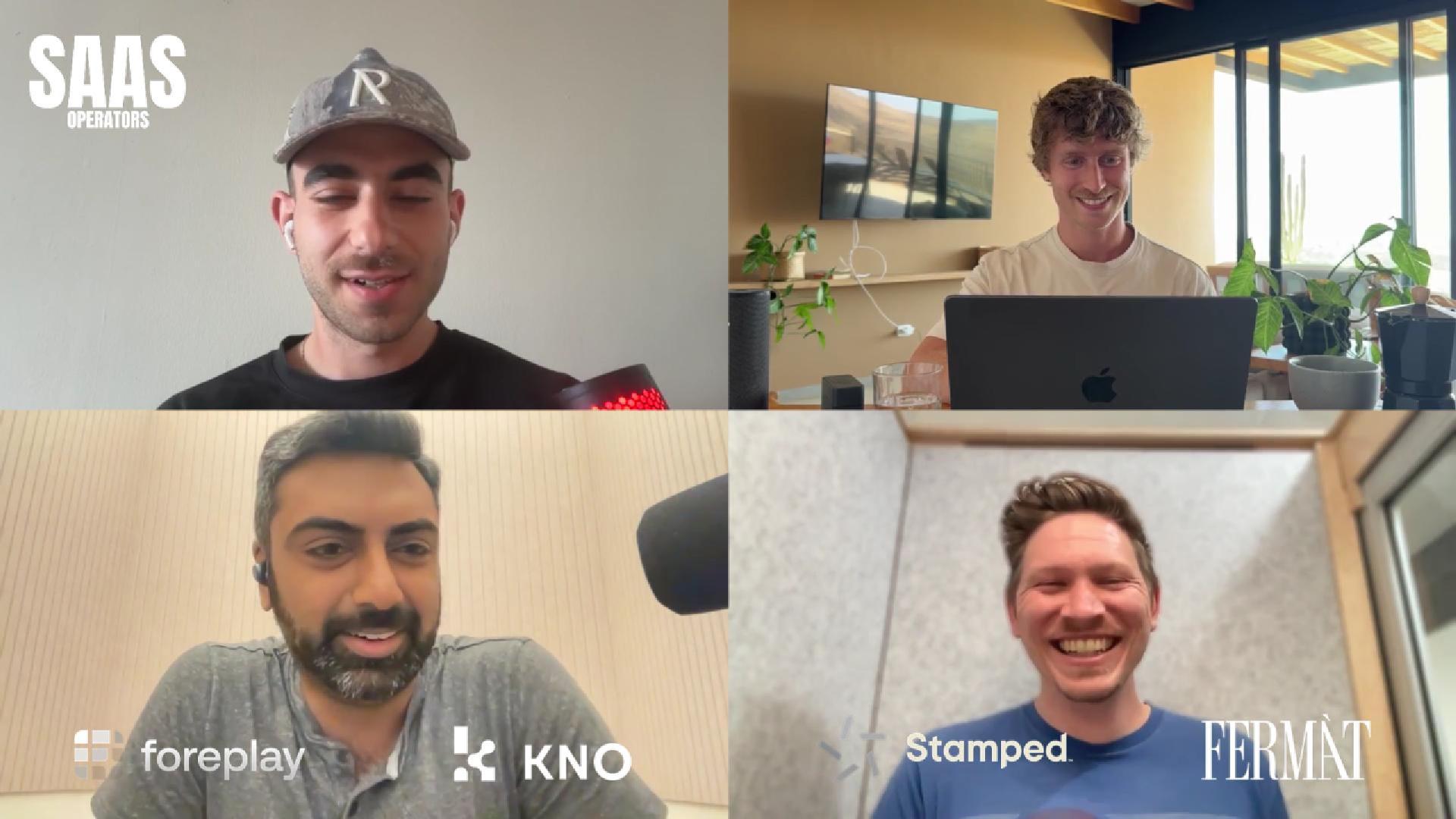E20: In Stealth Mode with Jacob Posel
In this episode of The SAAS Operators Podcast, we sat down with Jacob Posel to talk about his journey navigating the earliest stage of building a SAAS business and how he is thinking about AI, distribution and product-market fit. Jacob shares why chasing the “biggest opportunity” is not enough without obsession. How his background in marketing and advertising gives him an edge. He explains why stealth mode matters, how he is thinking about first hires, and why great tech is still the foundation of any surviving SAAS business. We talk about Icon’s controversial move into managed services, whether software as a service companies are destined to become... just service companies, and the reputational risks of overpromising when you only get so many first impressions. From cycle times in SAAS, to the important of momentum, and how AI is changing the way founders meddle directly in product development, this conversation is an exploration of how SAAS businesses starting today in 2025 operate.

This episode we had Jacob Posel join us. Jacob has been teasing the internet for months about building a SaaS company. He would not reveal much in private, so Rishabh pulled him onto the podcast to make him explain how he is actually thinking about starting one. Jacob has strong opinions on SaaS, AI, and distribution. He has also just signed the biggest contract of his life, so he is speaking from recent experience.
When Ads Tap the Zeitgeist
The internet has been buzzing lately about Icon’s pivot into managed services. Some people saw it as a betrayal. Others saw it as inevitable. We ended up spending most of this episode wrestling with that tension: where software stops, where service begins, and how AI might collapse the gap.
It started with a tangent about ads tapping into the zeitgeist. Rishabh pointed out that most ads lean too hard on the same problem-solution frameworks. The best ones cut straight into culture. Sydney Sweeney’s American Eagle spot. Gwyneth Paltrow reading ad copy for Airflow. Suddenly everyone knows the phrase “Apache Airflow,” even if they have no clue what it does. That is the power of aligning with the moment.
Jacob on Building in Stealth
From there, Jacob opened up about his own process of building in stealth. His biggest lesson: you cannot just chase the “biggest opportunity.” You need to be obsessed. If you are not constantly thinking about the problem space, you will always be a step behind.
For him, that gravitational pull is marketing and advertising. He already has distribution, contacts, and CEOs who want to test what he is building. That gives him an edge that would not exist in other markets.
The Icon Debate
The conversation turned when we got into Icon’s shift toward services. Critics argue they sold a product, but now they are competing with agencies by layering humans on top.
To me, it boils down to two questions:
- Does the software do the thing it promised?
- Does the new service do the thing the software was supposed to do?
Right now, the answer to both feels shaky. That is the reputational risk. Swinging for the fences is fine. But if you repeatedly fail to deliver, you burn through goodwill. Customers only give you so many chances before the cost of evaluating your product outweighs the hype.
Jacob’s Counterpoint
Jacob disagreed. His take is that ads are like a drug. Brands will keep coming back for another hit as long as there is a chance the next campaign works. Momentum matters more than reputation, and in that sense, Icon still has it.
But even if customers keep trying, the real risk shifts to talent. Potential employees might hesitate to join a company known more for overpromising than delivering. Execution risk balloons when the people you need most are not willing to sign on.
The Bigger Question
We closed on a bigger question: are we heading toward a future where every software company also runs a managed service?
Enterprise software has worked this way forever. Expensive tools paired with humans who customize and implement them. AI makes it tempting to believe software will do it all. But in practice, most businesses still want humans in the loop. The challenge is finding the right balance.
Final Takeaway
Great branding tells you instantly what a product is. Great software reliably does what it says. And great companies respect the cycle time of customer trust. You only get so many shots at a first impression.
